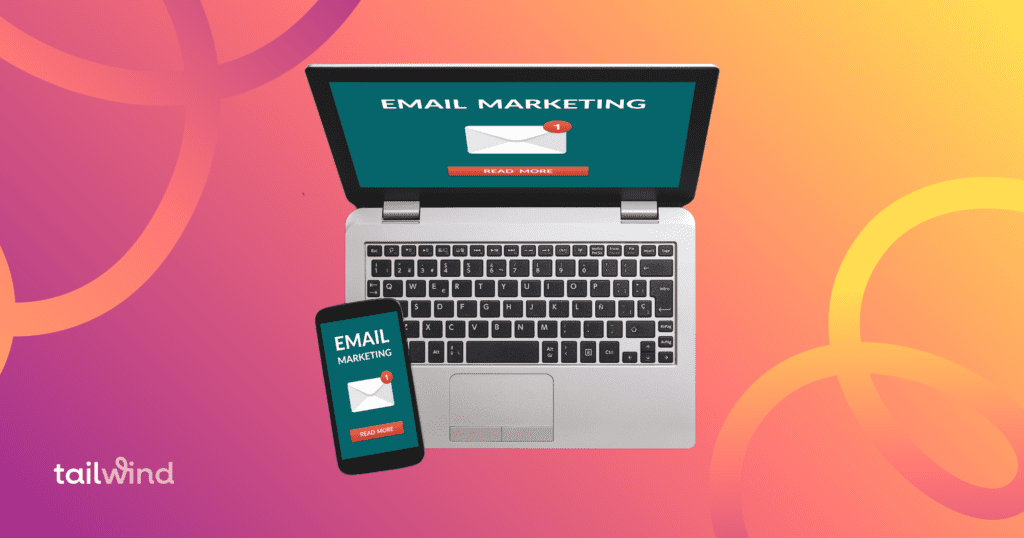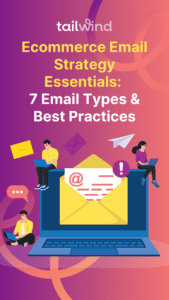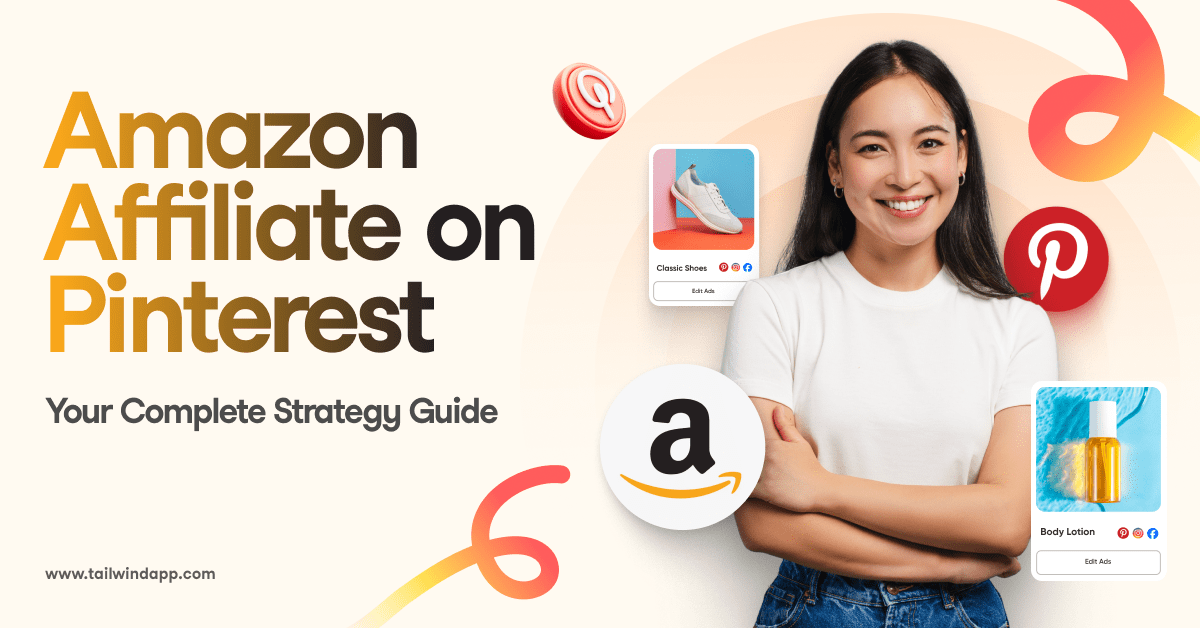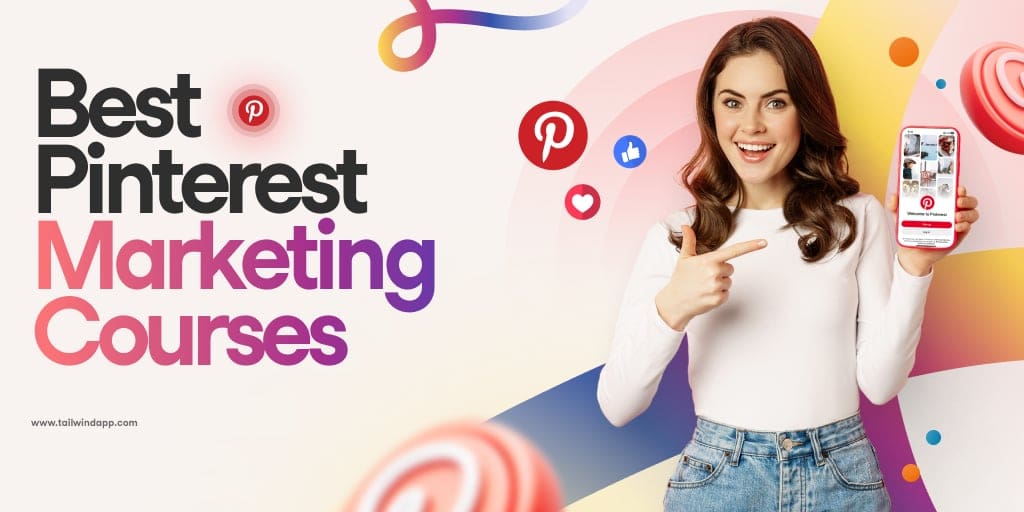
There are no two ways about it: email marketing is an inseparable part of owning, operating, and running a successful e-commerce business.
If you wish to succeed in ecommerce in this day and age, you need to develop a solid, effective, and efficient email marketing strategy that will inspire conversions, keep your existing customers informed about promotions and important developments, and keep customers engaged with your brand.
The trouble for many ecommerce business owners is that once they have built up a formidable organic email marketing list, they tend to struggle with what exactly to do with it. Namely, what kinds of emails they should be sending out, and how to optimize them for maximum effect.
This article will explore the most prevalent types of emails that successful online businesses use as a vital part of their ecommerce email marketing strategy — and how you can leverage them for your own ecommerce email marketing campaigns.
7 Effective Ecommerce Email Marketing Types
Welcome Emails
Ecommerce businesses often use the ubiquitous welcome email as part of their email marketing strategy. They are sent automatically to customers every time they buy something from your online store or sign up for your mailing list.
They are an essential part of email campaigns because they create instant customer engagement with your buyers and introduce them to your brand. Welcome emails have been tried and tested, generating higher open and click-through rates than other emails.
Leverage your welcome emails and make a great impression for future sales and repeat business. Lay out what your email subscribers and new clients can expect from your brand moving forward. Welcome emails don’t necessarily have to be promotional emails — but it can never hurt to give your marketing campaign a boost by offering an introductory discount code for potential customers to take advantage of.
Promotional Emails
Promotional emails are a key revenue driver for ecommerce businesses worldwide. These emails are designed to pique the interest of your email subscribers by offering limited-time discounts, sales, and offers.
Here are the three primary types of promotional emails that ecommerce businesses most often use:
- Seasonal promotional emails. These emails are sent when an online store holds a season-specific sale such as back-to-school sales, Black Friday sales, holiday sales, and the like during a particular time of the year.
- Exclusive promotional emails for email subscribers. These emails offer exclusive promotions for your email subscribers, fostering a sense of importance that breeds long-term customer loyalty — which in turn translates into greater customer lifetime value.
- Sale emails. It’s always a good idea to send out emails when your ecommerce store puts out exclusive discounts on specific items or when you hold a flash sale.
Promotional emails are typically among the best-converting emails because they offer immediate value in savings and discounts.
Transactional Emails
Transactional emails are automated emails that are sent after a customer interacts with your ecommerce site or online site.
Oftentimes they are the first point of communication that your email subscribers or customers will receive from you. And they’re hella effective — for instance, welcome emails, which are a form of transactional emails, can generate three times more revenue than regular promotional emails.
Transactional emails contain information about the action they have taken as a unique, personalized email sent to each customer separately — and that extra touch of personalization is what makes them so effective.
Examples of transactional emails include order confirmation emails, account activation emails, abandoned cart emails, and password reset emails, just to name a few.
See, your old and new subscribers expect — nay, demand — personalized interactions from the brands they support. And it takes more than just product recommendations.
Ecommerce brands leverage customer data and market segmentation to engage them at key moments in their lives, such as birthdays and anniversaries.
Personalized campaigns make customers feel more valued — besides enhancing your emotional connection with your target audience, keeping your ecommerce brand at the forefront of their minds, and generating more sales.
Abandoned Cart Emails
On average, 70% of online shopping carts are abandoned by shoppers. That means almost three out of four online shoppers add items to their cart and then leave it for a variety of reasons.
It could be because they were simply canvassing, browsing, or perhaps found a better deal elsewhere. Whatever the reason may be, that translates to a ton of sales you’re missing out on, especially if you just leave things as they are.
The thing is, the customer journey doesn’t have to end on that note. Why not send a cart abandonment email to recapture their attention and have them complete their purchase?
Abandoned cart emails are among the most common types of ecommerce emails every brand includes as part of their marketing tactics. After all, it’s an effective email conversion technique that can salvage a sale that would have otherwise been lost and gone forever. Nearly 75% of cart abandoners will forget about the purchase, so it’s mission-critical to get them back into the buying state of mind. A series of automated reminders about their intent to purchase might be the difference between a conversion and a whiff.
Re-engagement Emails
Customers come and go, regardless of how much customer lifetime value they have contributed over time. It’s a fact of life in the ecommerce business. But you can always try to draw them back with a re-engagement email or two.
Therefore, why not sweeten the pot for your lapsed customers by offering exclusive deals and discounts on their return purchase? You can also do the same and give them offers in exchange for user-generated content and make them want to return to the fold as loyal customers and brand ambassadors for your community.
Make sure your re-engagement emails are tailored to your customers’ purchase and browsing history by featuring the latest products that might attract their interest. For instance, if they bought a flat-screen TV last Christmas, showcase deals on video game consoles or smart home gadgets.
Review Request Emails
Customer reviews and testimonials are a tried-and-tested way to establish social proof and therefore trustworthiness, particularly for customers who need that extra push to move along the sales funnel.
95% of consumers read online reviews before making a purchase decision. And why not? They lend your ecommerce brand plenty of credibility, increase its reputation, and provide social proof that can influence consumer spending habits.
Besides social proof, customer feedback is essential for ecommerce business growth, since it can give you insights into how well your products and services are received by your target audience. It also demonstrates how much you value what your customers have to say by inviting them to share their thoughts. It doesn’t have to be rocket science, either — asking for a review request can be as simple as asking them to leave reviews for your brand to share on product recommendations moving forward.
Newsletter Emails
Many ecommerce brands often gloss over a mainstay of ecommerce marketing in the form of the humble email newsletter. Business owners often think that newsletters bring little in the way of a return on investment, but that’s where they’re wrong. Newsletters can be leveraged to push your products and provide value-added informative content. They allow you to kill two birds with one stone by generating engagement and driving sales simultaneously.
And if that’s not reason enough to use one of the most effective types of ecommerce emails, perhaps the following will sell you on the idea of publishing a regular email newsletter:
- Customers love to be in the know with the latest news on their favorite brands.
- Since effective newsletters are a 90%/10% mix between informational and promotional content, they can give your email subscribers a much-needed break from promotional emails.
- Newsletters can help establish your brand story and build your brand reputation, besides demonstrating its authority.
The best time to send out newsletter emails was yesterday. Excluding one of the best email marketing strategies you can possibly use for your ecommerce brand is akin to leaving money on the table.
Quick tip: If you plan to create a top-of-the-funnel content to convert the prospects into email subscribers before they buy, consider using Tailwind Ads to add performance marketing to your email acquisition mix!
Email Marketing Best Practices: 5 Tips for Crafting Effective Ecommerce Emails
It’s tough enough to win hearts and minds in your customers’ crowded inbox. Your email marketing strategy has to be at its best for your brand to succeed. Here are some email marketing best practices that you absolutely can’t omit from your marketing strategy.
Pay Close Attention to Your Email Subject Lines
The main determinant of whether your email gets opened — or likewise deleted or, worse, marked as spam by your customer or their email service provider — is the content of its subject line.
The subject line of your email is your target audience’s first impression of your brand. It’s the first line of text they will see on their inbox, so you must take the time and effort to craft a compelling one that will have them clicking it instead of deleting it, ignoring it, or marking it as spam.
Here are four key guidelines to craft engaging subject lines that will make your email subscribers want to click:
- Keep it tight, short, and sweet. Try to keep your subject lines no longer than 40 characters, since that’s the maximum length that most email service providers can display on-screen.
- Personalize, personalize, and personalize. Personalization applies to every aspect of your overall marketing strategy — all the way down to the minutiae of subject lines. You’ll increase your open rates by, for instance, using your customer’s first name as part of your email subject lines.
- Pique your audience’s interest. Think of your subject lines as a 30-second movie trailer. Its role is to heighten your subscribers’ anticipation and interest enough to get them to open your email. Well-placed phrases that pique the interest is key to boosting open rates.
- Draft several subject line ideas. Let your creative juices flow and create as many subject lines as you can. This way, you can sift through the clunkers and pick the strongest candidates that will get your email opened. One is never enough.
If you’re struggling for subject line ideas, consider using an artificial intelligence (AI) writing tool that can help generate optimized subject lines in mere seconds. Tailwind Ghostwriter, for instance, is one of the best AI email marketing tools you can harness not just for subject lines, but to craft optimized ecommerce emails for your email marketing strategy.
Segment and Personalize
Your subscribers aren’t just one single monolith of humanity. They come from all sorts of different demographics, interests, preferences, and walks of life.
Therefore, categorizing them based on those factors will allow you to tailor your message and create powerful, personalized marketing emails that translate into a greater return on investment over time. That’s what segmentation and personalization are all about.
Segmentation is an essential component of personalization, and both will make your ecommerce emails more engaging and relevant to your customers while increasing your email’s chances of being opened and clicked through for conversions.
Craft a Strong, Specific Call to Action (CTA)
Avoid using generic, vague CTAs like “learn more” or “shop now,” because they diminish your conversion rates. Readers might interpret them as mere promotions that don’t really do anything to solve their pain points.
As an ecommerce business, you need to identify exactly what your customers’ pain points are and frame your products and services as THE solution to their pain. Then, you need to incorporate both in your email CTA copy.
Therefore, use descriptive, action-oriented words and phrases that leave no room for misinterpretation. Give your readers a sense of what they will gain from actually taking action.
That means instead of using vague copy like “learn more,” try using “learn more about our service offering.” Instead of using “claim your discount,” try “get your 75% discount.”
The more specific you are about what your CTA will do for your readers, the higher you increase your chances of actually getting clicked through.
Incorporate Visual Elements
Research shows that emails that incorporate visual elements are 27% more likely to be opened than text-based emails (20% open rate). While the difference might seem negligible, it isn’t when we’re talking about the difference of thousands of dollars in actual conversions.
It’s important to make your emails pop — no one will read a wall of text in this day and age. Using visual elements such as a clean, crisp professional template, well-placed images, and an easy-to-read typeface will do wonders for your ecommerce emails by increasing your open rates and the chances of your subscribers actually reading them.
Here are some things to keep in mind when adding visual flair to your emails:
- Visual assets may increase email load times, so don’t overuse them.
- Don’t use images that are larger than 1 MB.
- Some email service providers block remote content on incoming emails. Add alt text to describe your images to circumvent these blocks and describe the image briefly.
- Add hyperlinks to your visual assets to increase CTR.
- Maintain a text-to-image ratio of 4:1.
But keep in mind that too many visuals and links may damage your deliverability, so in case you feel that your domain might have a weaker authority, consider sticking to more basic emails.
Optimize Email Design for Mobile
Mobile devices account for a significant chunk of email opens with approximately 62% of emails being opened on phones and tablets. This means that if you want to build a lasting ecommerce business, make sure your emails are optimized for mobile devices.
If your ecommerce emails aren’t mobile-friendly, your subscribers must zoom in or pinch to read your content. This will turn off a significant portion of your target audience, which may spell doom for your ecommerce email marketing campaign before it’s fully taken off.
Want to ensure your ecommerce email marketing strategy is optimized for mobile responsiveness? Here are some best practices to follow:
- Use mobile-optimized email templates that are easy to read on smaller screens.
- Keep subject lines concise with a maximum of up to 30 characters for optimal mobile device viewing.
- Use a font size of at least 14px for best viewing and user experience.
- Keep your email copy short — no less than 50 words and no more than 125 words.
- Avoid using large images to prevent slow loading times.
- Keep your CTA buttons near or at the top of your email body.
The Final Word
Effective ecommerce email marketing can help grow your customer base, increase your opens and click-throughs, and ultimately boost your conversions. Harnessing these types of ecommerce emails and leveraging these best practices will help you achieve everything your email marketing campaigns should be.
As an ecommerce business owner, if you haven’t been working on your email marketing strategy, perhaps it’s time to reevaluate. The return on investment that email marketing delivers is too big not to. And while it may seem to be a complex, time-consuming endeavor — and it can be, if you’re a solo entrepreneur — it doesn’t have to be overly complicated.
With the advent of AI-enabled email marketing tools like Tailwind Ghostwriter, it’s never been easier to run efficient, optimized ecommerce email marketing campaigns — and it won’t cost you an arm and a leg.





